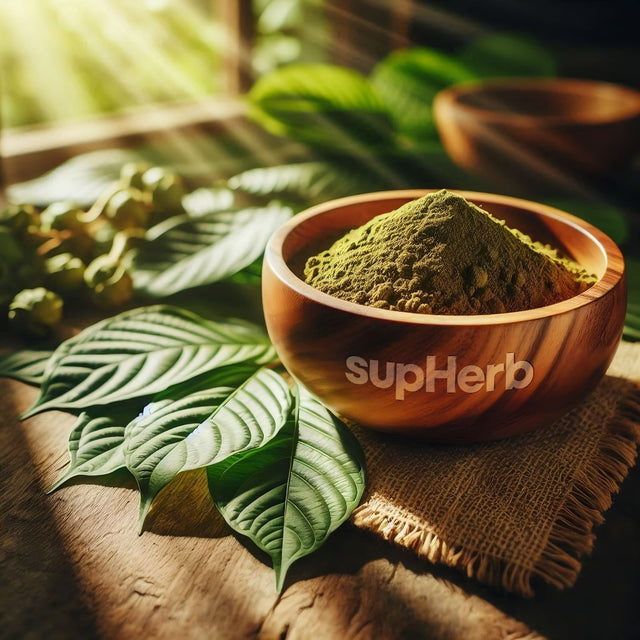Immerse yourself in the fascinating world of Kratom
Kratom: A fascinating plant with a wide range of uses
Kratom is a plant with a long tradition in Southeast Asian medicine. The leaves of the Kratom plant, scientifically known as Mitragyna speciosa known, contain alkaloids such as mitragynine and 7-hydroxymitragynine. These bind to opioid receptors in the brain and can produce both stimulating and relaxing effects.
Forms and Effects of Kratom
Kratom is available in various forms: powder, extracts and even flowers that have been refined with it. The effect varies depending on the dosage and individual sensitivity. Low doses usually have a stimulating effect, while higher doses are more relaxing. In addition, there are differences in the effect, which are usually defined by the geographical origin and the color of the leaf veins. The most well-known growing countries are Thailand, Bali, Borneo, Indonesia and Sumatra and the leaf veins can be red, white or green. In general, it is said that red has a particularly relaxing effect and white a particularly stimulating effect.
Legal aspects and controversies
Although kratom is legal in many countries, there is an ongoing debate about its regulation. Proponents see kratom as a promising alternative to opioids, while critics point to potential side effects and addiction.
In Austria, only the leaves or a powder made from them are permitted; extracts may not be sold and no recommendation for consumption may be made.
Traditional Application and Modern Use
In traditional medicine in Southeast Asia, kratom leaves have been used for centuries to treat fever, gastrointestinal disorders, pain, and to relieve withdrawal symptoms. Fresh leaves are often chewed to increase work performance and endurance. Today, many people use kratom to self-treat chronic pain, mood disorders, and withdrawal symptoms.
Scientific findings and safety information
In 1921, mitragynine was the first alkaloid isolated from kratom and showed both stimulant and analgesic effects. Recent studies suggest that mitragynine and its metabolites partially bind to opioid receptors but do not cause fatal respiratory depression as is the case with classic opioids. This may be due to their adrenergic, dopaminergic and serotonergic activities.
Surveys since 2017 show that the majority of kratom users consume the leaf material in powder form as a suspension in water. The usual dosage is between 1-5 g per dose, 1-3 times daily. However, the frequency of use varies depending on health condition and intended use.
Risks and Precautions
Kratom can interact with other medications and should not be used with alcohol, opioids, benzodiazepines, or antidepressants. Even though it is an herbal remedy, careless use can lead to dependence. People with a history of substance use disorder or mental health disorders are particularly at risk.
Recommendations for safe use
If you are considering using kratom, especially if you are taking other medications, please consult a healthcare professional.
Follow the principles of safer use by starting with a low dose and not exceeding the recommended maximum dose.
Make sure that the information you obtain comes from reputable sources and if you are unsure, ask a doctor again.
At supHerb you will find a large selection of high-quality Kratom powder!
Source: European Kratom Alliance (EKA) .




